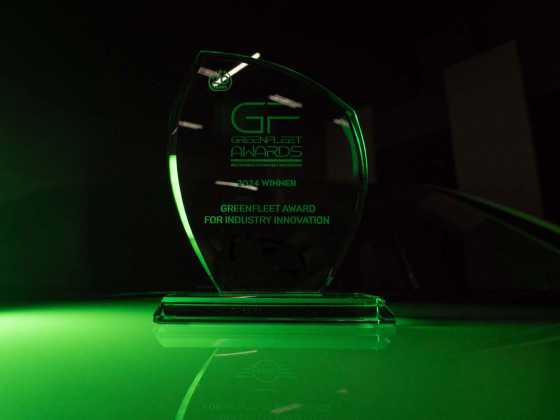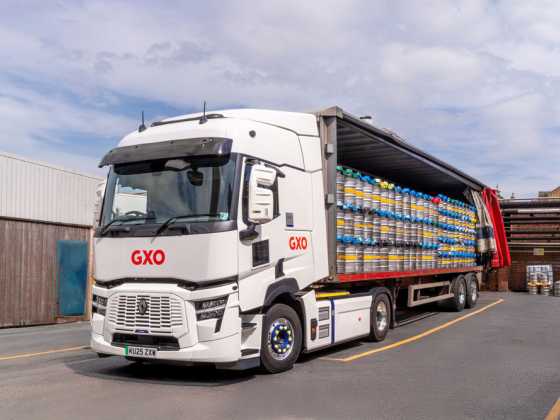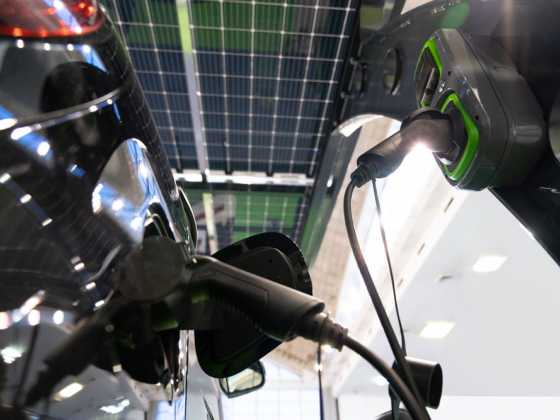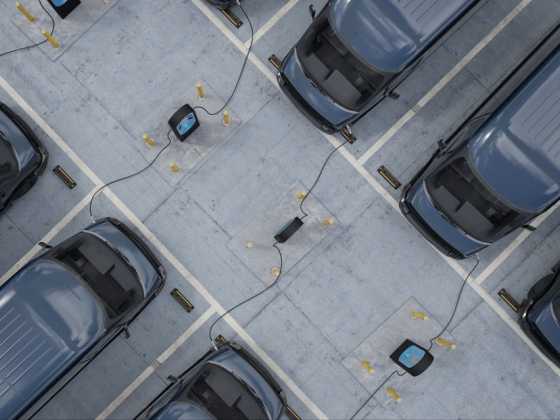Managing a diverse "amber light" fleet

How do you align a diverse public sector fleet with the goal of a net zero future? For the last few years, Martin Edgecox, fleet manager at National Highways, has been working on a solution
Few people in fleet can claim a career as diverse as Martin Edgecox. From working with manufacturers, central government, trade unions and navigating the automotive supply chain, he has, in his own words, “been around the block.”
As fleet manager for National Highways, he leads a team of nine people delivering highly demanding services 24/7/365, heads up the organisation’s fleet strategy, chairs the government’s Office for Zero Emissions (OZEV) working group for special vehicles, and is also a board member of the Association of Fleet Professionals (AFP).
For the last few years, all this experience has been channelled to tackle one of the industry’s biggest challenges – aligning a diverse public sector fleet with the goal of a net zero future.
A diverse fleet
National Highways manages and maintains England’s strategic road network, covering 4,300 miles of motorways and major A roads. Its fleet is diverse, including incident response, inspection and amber light vehicles. In line with Department for Transport (DfT) targets, it is required to arrive at any incident within 10 minutes and clear 95 per cent within an hour, leaving minimal margin for error.
Before 2019, National Highways was part of the civil service with general contract managers looking after vehicle management but as its needs evolved, so did its fleet requirements. Once the necessity for a dedicated function was realised, Edgecox was asked to build and lead the new team.
Transitioning the fleet to zero emissions has been a key part of this task. The initial target was to move 25 per cent of the car fleet from internal combustion engines (ICE) to ultra-low emissions plug-in hybrids (PHEVs) by 2022. This goal was exceeded by 66 per cent and today, the fleet is 83 per cent PHEV and 17 per cent electric. Now, the aim is to become zero-emission by 2027.
This goal is particularly challenging for National Highways due to the demanding nature of its operations. The amber light fleet especially plays a critical role in supporting and protecting the public during incidents, breakdowns, and collisions on the strategic road network. Of the 1,300 vehicles on the fleet, 355 of them are dedicated to this purpose, operating all year around. They can be in use for up to 10 hours during an incident, carrying around 400kg of essential equipment such as road signs, cones, and safety gear, as well as a dual traffic officer crew.
Martin said: “Currently, there are limited numbers of electric vehicles that can fulfil these operational needs, making the shift to zero-emissions vehicles more challenging. In fact, for our traffic officer vehicles, we’ve asked OZEV if we can move the zero emissions deadline to 2030 rather than 2027. Simply, there isn’t a fully electric heavy-duty, all-wheel-drive SUV yet available capable of meeting our requirements.”
For this reason, the fleet is forced to adapt and make the most of what’s currently available for the general car fleet to stay on track with government targets. “Utilisation is key, and the team here is constantly reviewing this issue. It’s a major undertaking to ensure we’re maximising efficiency and return on investment because ultimately, we’re working with taxpayers’ money.
“The PHEV option currently suits us as we always have the resilience of the petrol engine as well as the short-range battery. However, we’re constantly thinking about how to develop that and drip-feed electric vehicles into use. It’s a key challenge for us.”
Shifting attitudes
Getting drivers on board has been very much part of the process of electrification and Edgecox says it has been an evolving journey. The heavy-duty traffic officer fleet of vehicles used traditional 4x4 diesel vehicles like Mitsubishi Shoguns and Land Rover Discoveries until 2019. Transitioning to PHEVs was a significant shift and came with challenges.
“There was some initial resistance, but we engaged with the 1,200 traffic officers early on, holding several workshops to explain the reasons behind the decision. It’s a big culture change. For 20 years, they’ve been used to refuelling vehicles with diesel and suddenly, I’m asking them to plug in and walk away. It’s a major adjustment for them but it was ultimately embraced.
“It helped that our fleet team worked closely with drivers to ensure their input shaped the design of the PHEVs adopted, making sure they had a stake in building and refining the fleet.”
The Volvo XC90 is a good example of how the fleet team engaged with its driver community. Initially, one unit was trialled and the specification developed based on their input. Now, National Highways operates 230 and the build is the industry benchmark for blue and amber light fleets.
“Our collaborative approach ensured that we understood driver needs, as they can spend up to 10 hours a day in these vehicles, and we’re proud that police fleets now replicate my design specification. Having drivers involved and consulted will also make it easier to guide them toward the next step, which is transitioning to electric vehicles.”
Open conversations
Collaboration and employee engagement are the keys to moving forward in this space, Edgecox believes and despite the dearth of current zero emission options, the team is tackling this complex shift head-on with a procurement policy driven by his leadership and expertise.
“We purchase around 200-300 units a year, which isn’t a significant volume for manufacturers, and we understand they’re unlikely to adjust the specifications of a 4x4 just for us. However, I take a very proactive approach to working with them. It’s an area where relationships are key and the best way to initiate meaningful dialogue. Especially, pilots are critical for us – they allow us to innovate, get involved early, and assess whether a vehicle will meet our needs.
“Right now, we’re in active conversations with several manufacturers and are passionate about driving progress, particularly in the van space. For us, it’s not just about hitting targets – it means ensuring long-term sustainability and fostering positive behaviour changes to help us become not only carbon-neutral but also carbon-efficient, including exploring hydrogen options.”
A voice for the public sector
The National Highways team is also proactively collaborating with other fleet operators and organisations, leveraging collective bargaining to strengthen their purchasing power, and this is where Edgecox’s role as a board member at the AFP is valuable. He serves on the main board of 13 directors and is leader of its new public sector fleet group.
“Historically, the public sector hasn’t received much focus in fleet, so I saw an opportunity to widen the scope and bring new members into the fold. My role is to amplify the voice of public sector fleets, including central government, local authorities, councils, and major utilities. Our mission is to support these fleet managers, ensuring they have a platform to be heard. The AFP board are an outstanding team of fleet specialists, and I’m privileged to be part of the group.”
He says that the approach is really about collectivism. “At National Highways, we work closely with OZEV and the DfT, and through my position on the AFP board, we’re actively promoting the industry and helping members articulate the challenges of electrification. I’m in something of a dual role — I support operational challenges on one side and contribute to policy on the other – but that twin perspective is invaluable, and I genuinely enjoy it.”
Public sector fleets can make significant progress and stay ahead of the curve by being agile, but it all comes down to building these constructive relationships, he says. “I’m fortunate to have an outstanding fleet team at National Highways that allows me to focus on creating links within the industry and seeking out new opportunities, which is crucial for our continued success.
“While fleet management has evolved technologically over the years, the core of the work we do remains rooted in personal and face-to-face dialogue. The sector is quite traditional in that sense and that’s a good thing, I believe. Strong relationships are the key to developing expertise and building capacity, and I hope that approach continues for a long time.”






